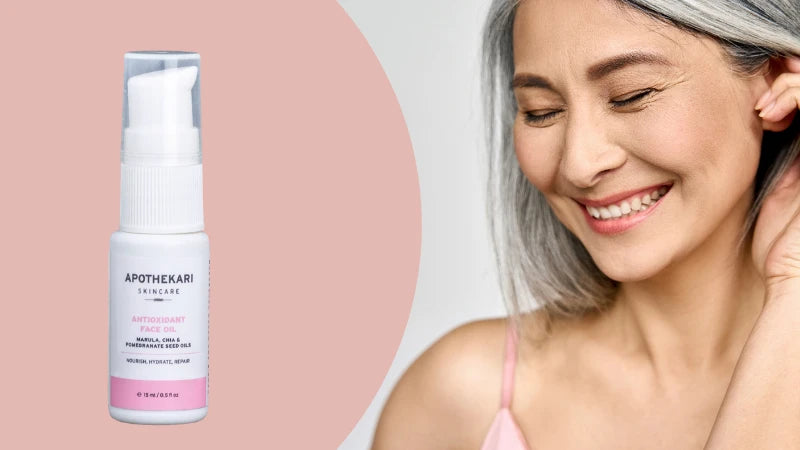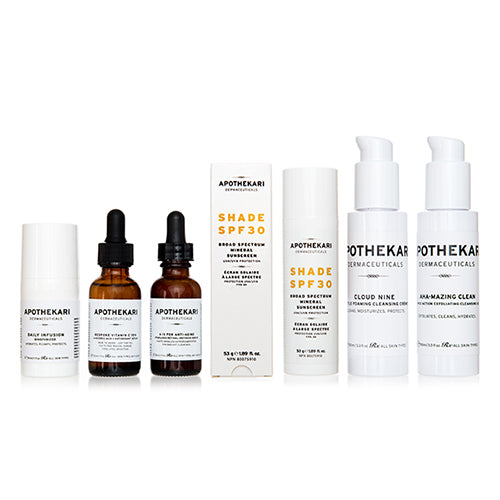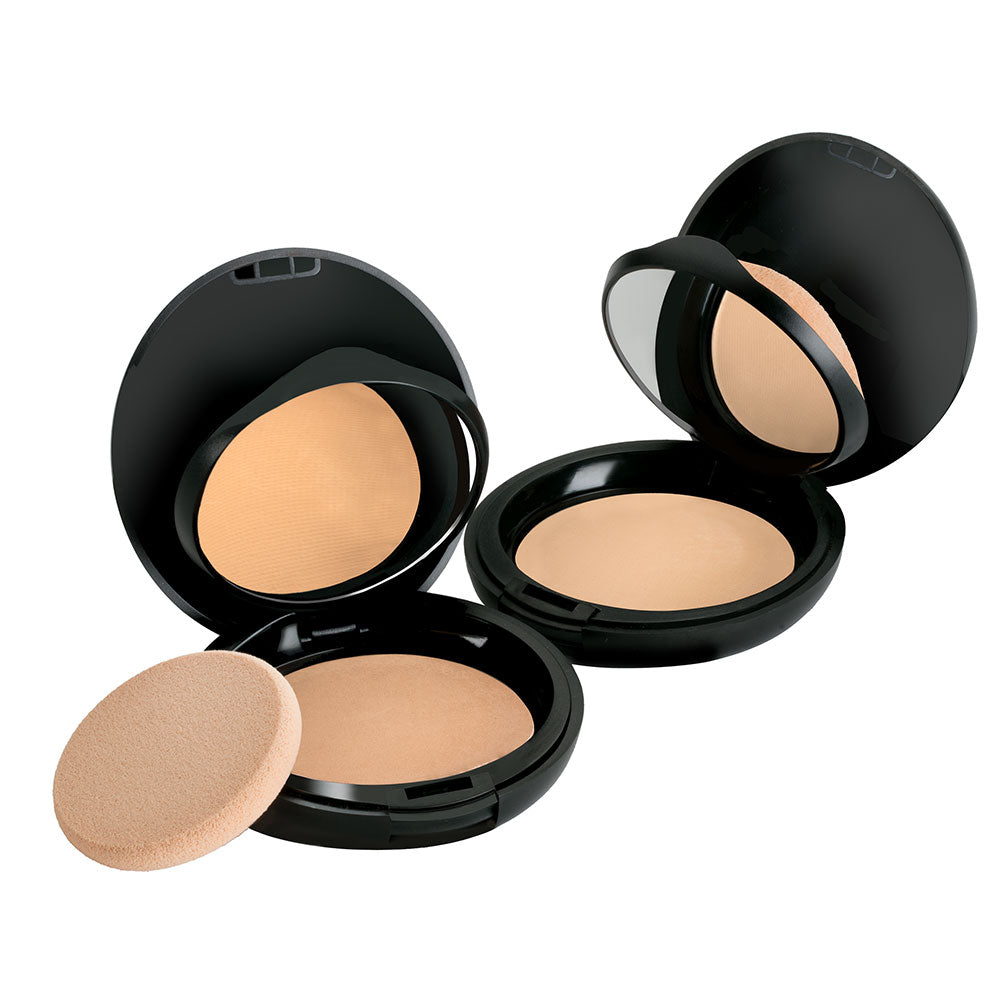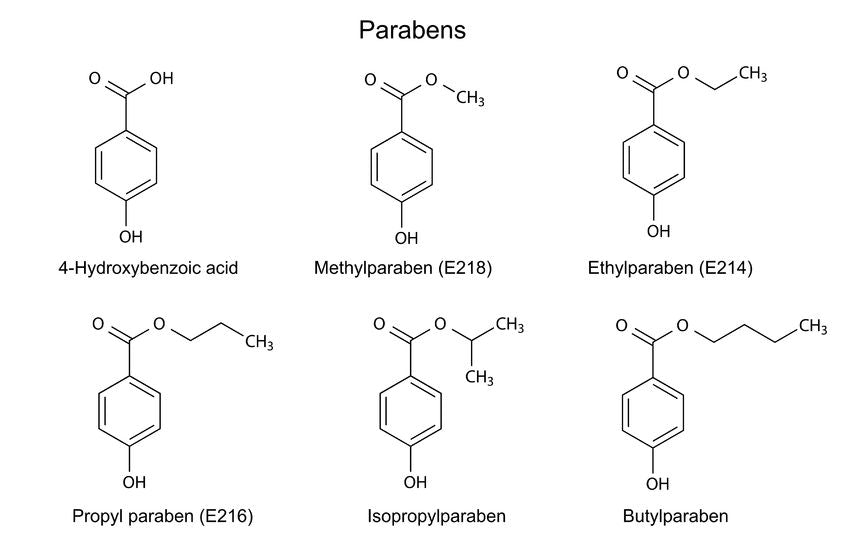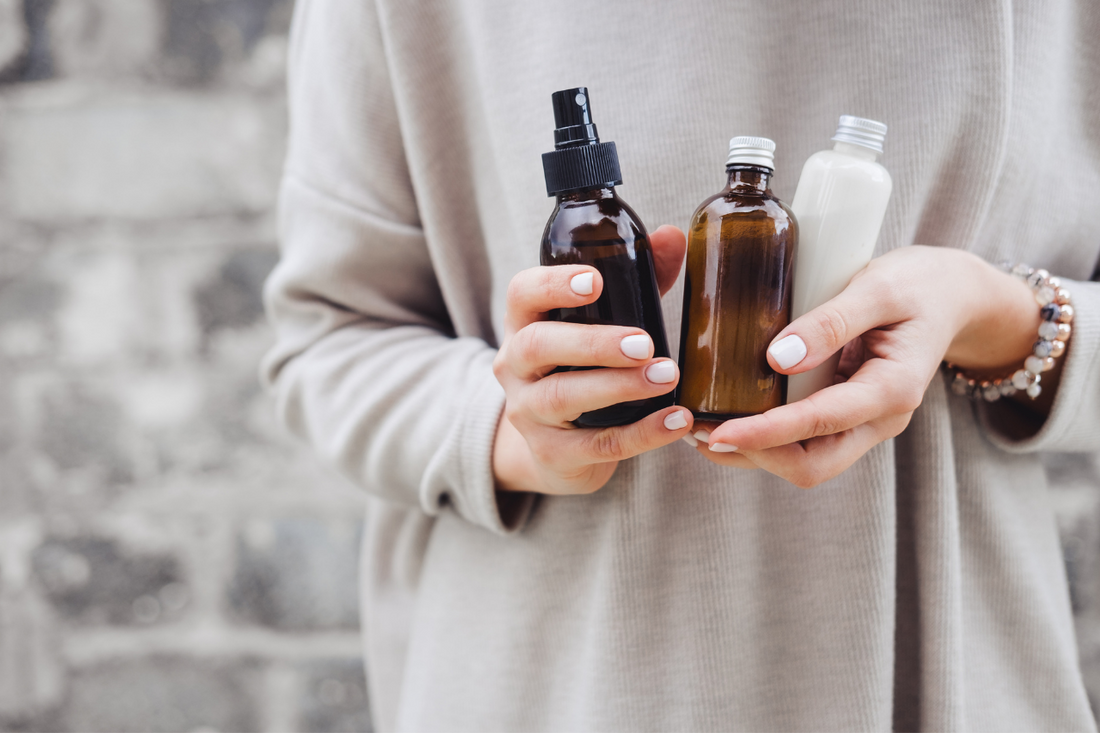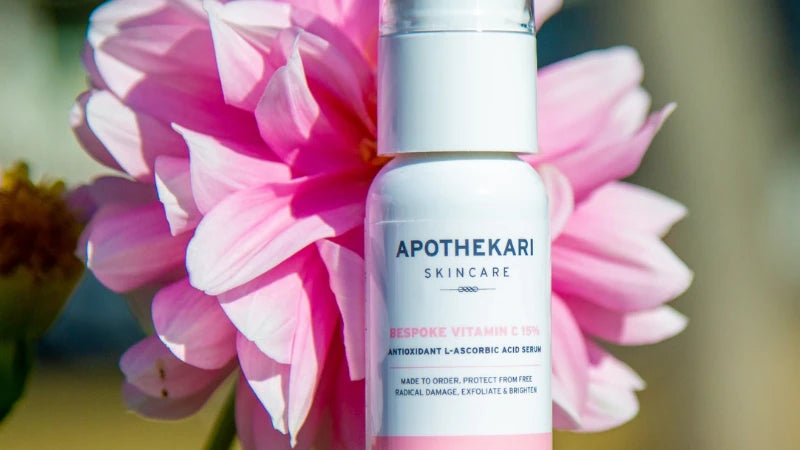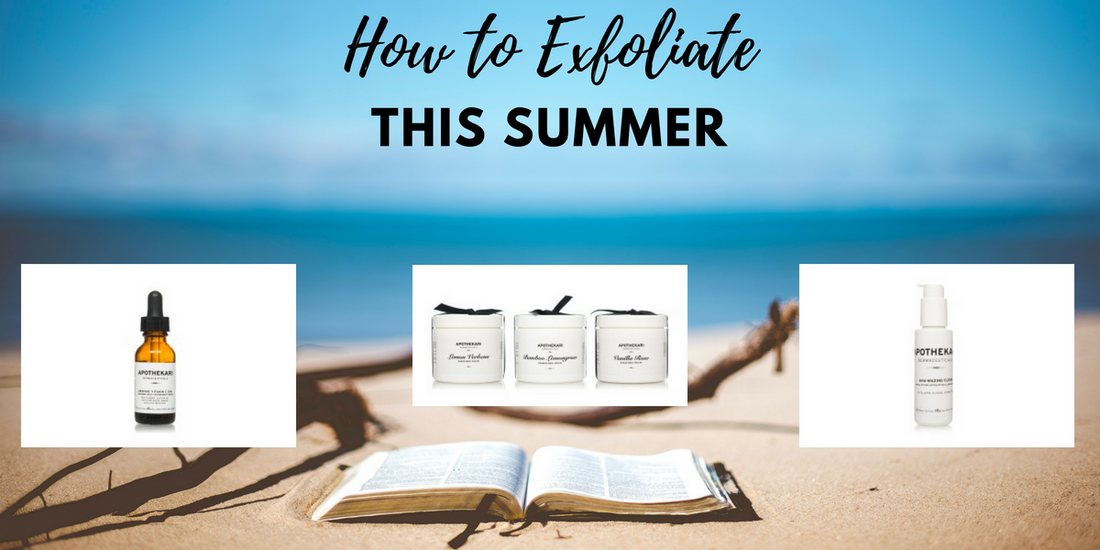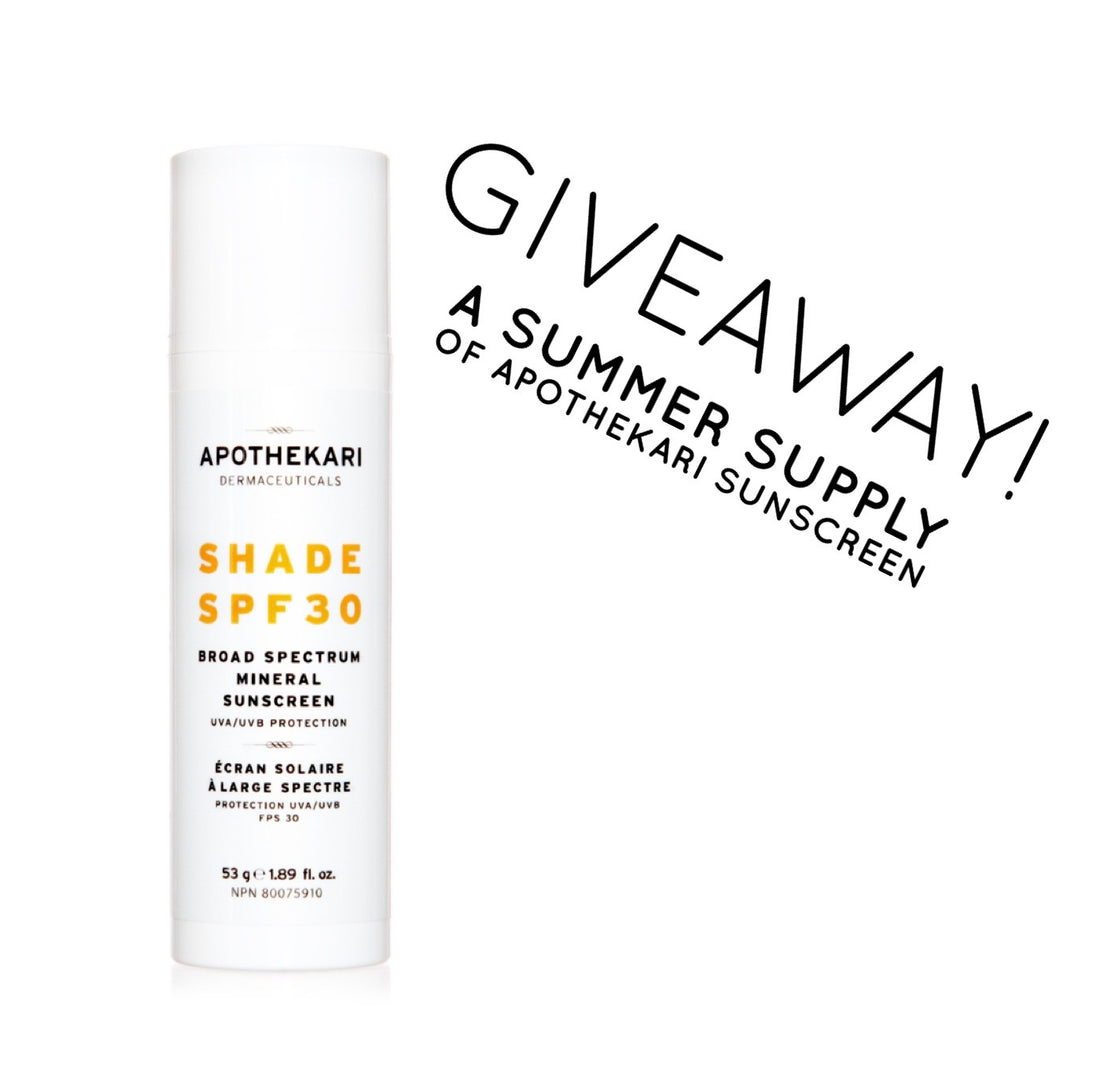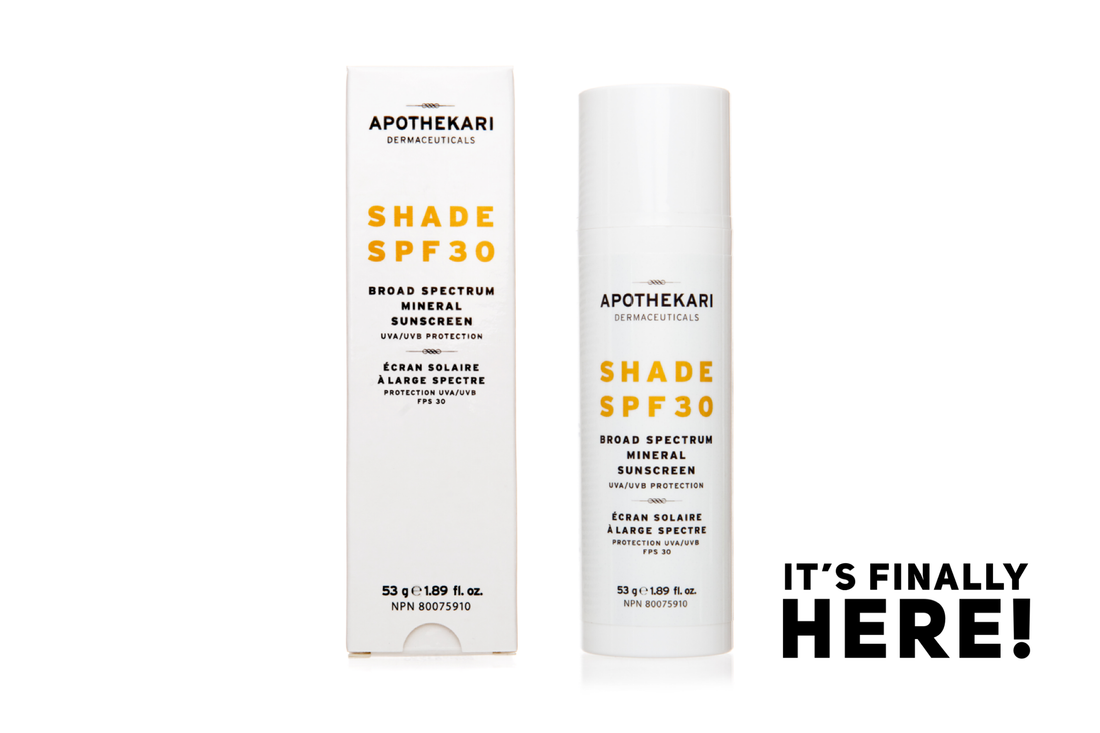Blog
How to Set Skin Care Intentions for 2019
Ever wonder about resetting habits—like skincare intentions—for a New Year? May sound a bit woo, but bare with me, self care is essential to ensure your wellbeing. And what better time to make it a priority than the start of this year? While I’ve abandoned New Year’s Resolutions, which often end up seeming difficult once we reach mid January, these days I’m leaning towards more simple and achievable goals which are easier to stick to and more achievable. For this first blog post of 2019, let’s kick things off with a slightly more mindful post focusing on skin care intentions. And before you think I’ve gone TOTALLY woo woo on you, we’re still going to be discussing skin care but looking at it in a slightly different way. While there are companies that meditate over and bless their products while chanting and playing music before they are packaged and shipped to customers and retailers, I’m not convinced that’s the path for Apothekari. (However, never say never!). Our intention at Apothekari is to cut through the confusion, simplify the process and deliver skin care treatments formulated with ingredients that have scientific proof to back them up. Nevertheless, I recognize that what we put on our skin not only nourishes our skin, but also can play a role in our emotional well-being. The sensory experiences of aroma and touch associated with skin care have a connection to our inner beauty that cannot be discounted. When we approach skin care as part of our self care, we accept it as a way of feeling good about ourselves rather than as a chore or as an indulgence. 3 Skin Care Intentions for 2019 For 2019, I’m focusing on 3 ways to be more mindful when it comes to the care of our skin: 1. Think About What You Eat As the body’s largest organ, our skin reflects what we put into our mouths. I’m not sure about you, but after consuming way too much sugar, an abundance of heavy dinners and alcoholic cocktails, my skin often reflects the culinary abundance by the time the New Year rolls around. My body craves warm bowls of nourishing soups, crisp vegetables and leaner fare. I find that a structured eating plan makes perfect sense for the New Year. I’ve embarked on the Whole30 Challenge in past years, but this year I’m focusing on being more mindful about what I eat and appreciating the impact that this has on the health of my skin and overall wellness. Whatever works for you – a juice cleanse, calorie counting – it’s about paying attention to how your body reacts to your food choices. 2. Get Moving In a previous post I’ve discussed a study that showed that it’s not just our hearts that benefit from exercise. Researchers have demonstrated that premature aging in nearly every organ in the body, including the skin, was completely prevented in mice that ran on a treadmill three times a week for five months. My ‘thing’ is hot yoga, a practice that I took up nearly six years ago and which has helped me to build strength and flexibility and also to find calm. “Exercise truly is the fountain of youth.” 3. Stick to a Routine Despite how tired you may feel when you fall into bed, establishing and STICKING to a skin care routine is paramount to success. As with most things in life, consistent action produces results – one can’t expect to try a product just once or twice and expect to see a dramatic transformation. You’ll achieve far more benefit from a long term plan than you will with a week-long “miracle treatment.” It’s not just topical products that have an effect on your skin’s health, it’s about investing beyond that in a nurturing and intentional way. This year, by telling and showing your skin (and the rest of your body) that you care via your actions, you may find your skin responding in ways you didn’t expect. And if that’s a bit woo-woo, well then so be it!
Learn moreCurious About How to Use a Face Oil? 4 Tips
If you’re curious about how to use a face oil, you’re not alone. They’re are cropping up everywhere these days and just in time for cooler temperatures and lower humidity, when our skin suffers more from dryness, we’ve just introduced our new Apothekari Antioxidant Face Oil. Formulated with Olkerii Marula Oil plus other skin nourishing vegetable oils including chia, pomegranate seed and crambe seed along with essential oils, it delivers fatty acids, sterols and antioxidants to calm, heal and protect skin. It is fast absorbing, suitable for all skin types and formulated to promote soft, radiant skin, protect skin from dehydration, while encouraging skin rejuvenation and reducing inflammation. Customers are telling us that they love our face oil because it has a light emollient (skin smoothing) effect without any greasiness. And they are raving about its divine scent. Shop Antioxidant Face Oil How to Use a Face Oil Depending on the formulation of your oil, it can be suitable for all skin types. That’s a topic for another post, but in this post I’m sharing some tips on how to use a face oil in order to maximize its benefits. Face oils provide emollient and/or occlusive (blocking) action making them ideal to help moisturize skin, but they can’t do it all by themselves. They DON’T hydrate skin. Despite what you may have been told, face oils are not moisturizing. For that effect, you need a product that contains water or a humectant – ingredients that help to increase or draw moisture to the skin. This includes ingredients such as glycerin, propanediol or sodium hyaluronate/hyaluronic acid. Face oils work best used in conjunction with ingredients and/or products that can hydrate skin such as moisturizers and or serums. Less is more. You don’t need to apply a lot—just a few drops are enough to deliver the benefits. When Should I Apply Face Oil to My Routine? Apply as the LAST step in your skin care routine. Many individuals have told me that they apply a face oil as the FIRST step in their routine after cleansing. Due to their occlusive effects, face oils are best applied over top of a hydrating product like a moisturizer or serum to help prevent evaporation, lock in the moisture and ensure that it reaches the skin’s deeper layers. If you’re not using Apothekari Antioxidant Face Oil, are you using another? Do tell.
Learn moreAre You Ready for the Skin Care Diet?
If even the thought of the word ‘diet’ makes you cringe, you’ll be happy to know that the skin care diet doesn’t focus on what you put in your mouth. Don’t worry about cutting back on gluten, sugar or alcohol, the skin care diet making the waves right now, focuses on what you put on your skin. Thought to be a push-back against one of the latest trends to hit the beauty world, “The 10 Step Korean Skin Care Routine”, the skin care diet emphasizes how to minimize the steps in your skin care routine. As someone who’s a minimalist when it comes to skin care, I can’t even begin to imagine the number of products and the amount of time it would take to implement a 10 step skin care routine on a regular basis. While the end goal of the skin care diet is to decrease irritation, I see how this would not only free up significant amounts of time PLUS leave more money to spend on other things. It’s not surprising that skin bombarded with lots of actives on a daily basis may struggle. This can become extremely problematic if one loads up on products containing retinoids, alpha hydroxy acids and/or low pH ingredients (like Vitamin C) all in one go. Products that are either incompatible or harsh can result in the development of redness, sensitivity and irritation. More serious cases may result in contact dermatitis, a condition that presents with large, burning, and itchy rashes that can take anywhere from several days to weeks to heal. Why a Skin Care Diet? The word diet is involved because it’s a way of eliminating products that may be harming your skin or which may be unnecessary. Individuals are advised to cut back to the basics – a cleanser, moisturizer and a sunscreen, products which typically tend to be free of potentially harsh active ingredients. This regimen may be compared to an elimination diet that is often recommended to help individuals with suspected food allergies. You remove most things from your skin care regimen and then gradually reintroduce those that you consider essential, one at a time. This process allows you to determine how your skin tolerates and responds to each treatment and helps you make certain that you aren’t introducing ones that are problematic for your skin. When it comes to your skin, more steps and products are not necessarily better and it’s never a bad idea to simplify your skin care regimen. At Apothekari, we recommend 4 steps to great skin – Cleanse, Prevent, Protect and Treat (for individual skin concerns). It’s possible to get away with just 3 products and then add one or two for specific issues. I don’t know about you, but I’ll take 3 or 4 steps over 10 any day!
Learn moreIs SPF Makeup Enough?
It’s September and with temperatures dropping, the sun playing hide and seek and rain clouds making an all too frequent appearance, you may be tempted to ditch your sunscreen and switch to SPF makeup instead. Tempting though it may be, fall (or any time of the year for that matter) isn’t the time to do it. SPF makeup may seem like a serious win-win – who doesn’t love multi-tasking products, after all – but it’s better in concept than in theory. SPF products, including sunscreens and makeup, achieve their rating via testing methods that involve precise application of a specific amount of product skin (2 mg of product per square centimeter of skin, or a dollop equivalent to the size of nickel). Studies have shown that most of us don’t apply enough sunscreen and this almost certainly applies to SPF makeup. When was the last time you applied that much foundation to your skin? Yup, me too! So in theory, while SPF makeup could offer up enough protection against UVA and UVB rays, the reality is that most of us use it in a way in which it just won’t happen. Foundations and powders are helpful, there’s no doubt about that, but they shouldn’t be used as your primary source of sun protection. They can however, bump up protection to your daily sunscreen and that’s the way to get the most out of them. How To Use SPF Makeup For optimal sun protection, choose a dedicated broad spectrum sunscreen instead. Apothekari Shade SPF 30 is a zinc-oxide, mineral sunscreen that delivers non-whitening UVA/UVB sun protection and is designed for all skin types. It is especially suitable for sensitive skin and contains antioxidant support to protect against free radical damage. For maximum benefit, we recommend applying it directly over an antioxidant serum (like our Apothekari Bespoke Vitamin C) because sunscreens work in tandem with antioxidants to protect against UV damage in separate ways. For a wide selection of UVA/UVB sunscreens, our sister site PhaMix.com stocks a large selection. There’s no reason to shun SPF makeup; just keep in mind that it’s not meant to replace your sunscreen. If you want to use makeup with SPF, apply it on top of your sunscreen. Try to seek out a formulation that protects against both UVA and UVB rays to help protect against premature aging, sunburns and skin cancer. Additionally, aim for an SPF rating of 30 or higher to ensure maximum protection. Think of sunscreen as the cake, with SPF makeup as the icing on the cake. It’s not the main event, but it can add to it.
Learn moreThe Problem with Natural Skincare Products
*Disclaimer – This post is not meant to bash natural skincare products; rather clarify, from a pharmacist’s perspective, what one can expect when seeking out cosmetics marketed as being natural… Although we describe Apothekari as “Scientific Skin Care”, we could easily justify calling it a natural skincare line. Our products are formulated with safety and efficacy in mind after all, and avoids many of the ingredients that individuals find problematic or wish to avoid in skin care treatments. However, when it comes to describing a cosmetics line as a natural one, consider that the term ‘natural’ isn’t regulated. For the most part, the term is used as a marketing one to promote products as being safer or better for consumers and the earth, when that may or may not be the case. ANY company can market their products as being natural and if one isn’t sure about exactly what they are looking for, it’s easy to be misled. In this post, let’s get down to the nitty gritty about natural skincare. When I’m asked if Apothekari offers natural skincare treatments, it’s important to know what precise features a customer is looking for. Natural skincare lines may be: Paraben-free Formaldehyde-free Preservative free (not a good idea! Read why here). Sulfate-free Phthalate-free Vegan/plant based Silicone-free Synthetic colourant-free Cruelty-free, etc. Apothekari is all of the above*, but just as important, it is also an effective line, incorporating ingredients that have demonstrated skin benefits in clinical trials. Some natural skincare lines do not share the same philosophy, emphasizing the safety aspect, while letting us down when it comes to efficacy. In order to offer skin care treatments that are both safe and effective, it’s important to include specific concentrations of active ingredients and use manufacturing practices that respect the integrity of these ingredients. Ingredients must be compatible with one another, to both minimize the potential for side effects and to ensure that they don’t interact with one another. Lastly, a sound preservation system is essential. Why Natural Skincare May Let Us Down If you’re looking for cosmetics that deliver results, it’s not enough to focus on the fact that it is a natural skincare product. Safety can’t be disputed, but the following are important to keep in mind as well: A Lack of Synthetic Ingredients. Flowers and plants are a fantastic source of skin beneficial ingredients, but their composition can vary from batch to batch, depending on on the season, the geography and the climate. What you got a few months ago may not be the same as the lot you get now – think of summer tomatoes vs the ones we get in the dead of winter. Plus, it may be difficult to extract enough of the active ingredient from a plant. A lab allows for the controlled production of ingredients, with little variation from batch to batch. Preservative Free. All products formulated with water MUST contain a preservative. If you opt for a natural, preservative-free line, you may be limiting yourself to products formulated with oils only. There’s no doubt that oils offer many skin benefits, but your skin needs more. Natural isn’t Always Safe. Ingredients such as essential oils and citrus oils are as natural as can be. And while they can smell lovely, they can also be highly sensitizing and irritating for many individuals. As I’ve written about the topic before; there are numerous safe and effective ‘natural’ ingredients and we include many in our brand. However, they’re not always the best or safest option for skin and problematic ones do exist. Brands can do it right by incorporating both natural and synthetic ingredients into their formulations. By choosing wisely, it’s possible to offer products that deliver on efficacy while minimizing the potential for adverse effects. That’s natural skincare done right and it’s the philosophy we follow at Apothekari! *not all our products are vegan, but many are. See individual product listings for more detailed information.
Learn moreAre Parabens Bad in Cosmetics?
When it comes to cosmetics are parabens bad? Widely used as preservatives since the 1950s, parabens are available in a range of forms including butylparaben, ethylparaben, isobutylparaben, methylparaben, or propylparaben. They are added to health, beauty and personal care products to keep them free from fungus, mold, bacteria and other dangerous microbes. They are also used in baked and processed foods. While the use of preservatives in skin care is non-negotiable when it comes to maintaining the safety and integrity of your cosmetics, there are many choose from. In this article, let’s look at parabens in a bit more detail. The Paraben Controversy In a 2004 study, trace amounts of parabens were found in breast cancer samples. While the study didn’t prove that they can cause breast cancer, it did confirm that parabens were able to enter the skin and remain within tissue. A more recent study found higher levels of one paraben, n-propylparaben, in an area of the breast where the highest proportion of breast tumors is found. Because they’re known to have weak estrogen-like properties, there is concern for their potential as endocrine disruptors, which means that they are capable of disturbing the normal function of the hormone system. Since our hormones control many of functions of our body, a disruption to this can impact several things including growth, development, reproduction and brain function. Parabens are known to mimic the growth effects of estrogens on breast cancer cells, yet some consider their effect too weak to cause harm. However, a 2015 study looked deeper by examining breast cancer cells and exposing some to parabens. Researchers found that they not only triggered the estrogen receptors by turning on genes that caused the cells to grow, but did it in quite a significant manner and at very small concentrations. The study demonstrated that parabens may be more potent at lower doses than previous studies have suggested, which may spur scientists and regulators to rethink the potential impacts of them on the development of breast cancer. What Should One Do – Are Parabens Bad? The concentration of parabens used in personal care products tends be less than 1% and both the Food and Drug Adminstration (FDA) and the American Cancer Society maintain that studies haven’t shown any direct link between parabens and health problems — including breast cancer. There are also no concerns or restrictions regarding their use in Canada or Australia. In the EU, regulators have signed off on the safety of some parabens, but increased restrictions on their use and completely banned them in some instances. They have also reduced the maximum concentrations allowed for propyl- and butylparaben. Contrary to many rumours, the use of parabens has not been banned in the EU. So, are parabens bad? Maybe, maybe not. What is clear is that more research is necessary. If you wish to avoid them, it’s important that you get used to reading product labels. Avoid those listing anything ending in -paraben – ethylparaben, butylparaben, methylparaben, propylparaben, etc. Also keep in mind that just because a company says that their products are ‘paraben free’, it doesn’t mean it’s safer as it could be hiding a host of other potentially bad-for-you ingredients, including not having an adequate preservation system. Products that are anhydrous can be safely formulated without preservatives but anything containing water must contain one. For those of you who ask the question, “are parabens bad?”, the answer isn’t clear. However, at Apothekari we have taken the precaution of formulating without them because why risk it when safer options are available.
Learn morePreservatives in Skin Care – 5 Things To Know
The use of preservatives in skin care can be a confusing topic. On the one hand, you’ll hear about how preservatives are associated with side effects. Yet, other companies and scientifically minded individuals (like me) express concern over the safety of cosmetics promoted as being ‘preservative free’. It’s getting confusing out there! In this post, let’s take a closer look at preservatives in skin care to help you understand why preservatives are important and how to choose products that are as safe as can be. Here are five things that will help you navigate the cosmetics counter without a science degree. 5 Tips to Navigate the Cosmetics Counter 1. If A Product Contains Water, It MUST Have a Preservative Many cosmetics contain water and when water is present, it contributes to the growth of mold, bacteria and fungi. Even if the formulation doesn’t contain water, cosmetics are often kept in humid environments and may be contaminated when your hands touch the contents. Preservatives help to prevent the growth of these dangerous substances. 2. Not All Chemical Preservatives Are Bad While chemical preservatives may be problematic in high doses, the quantities used in cosmetics are minimal, generally less than 1%. The main concern is with preservatives that cross over into the blood stream where they may lead to side effects. The following are ones we should watch out for: Phenolic acid (Phenol). In large quantities, it has been known to cause respiratory issues, coma, fainting, and even paralysis. Phthalates: Phthalates can be absorbed through the skin and accumulated in the body. They are associated with the development of breast cancer, asthma, ADHD, obesity and Type 2 diabetes, neurodevelopmental issues, behavioral issues, autism spectrum disorders, altered reproductive development, and fertility issues. Petroleum-based compounds: Some (propylene glycol, polyethylene glycols, or polyoxyethylene) can be contaminated with 1,4-dioxane, a chemical that the FDA says may cause cancer. However, it’s important to note that most cosmetics companies these days will test for this before using it so it isn’t as big as an issue as it once was. Formaldehyde: This is a carcinogen and can cause allergies, irritation, and asthma. 3. Beware of Paraben Free Labels Although many companies (Apothekari included) are moving away from the use of parabens in their products, the alternatives may not necessarily be better. (see the list of ones to avoid in number 2, above). Parabens have estrogenic activity and this effect has been linked to fueling the growth of existing cancer cells. Some studies have shown them to be carcinogenic (cancer causing) as well. The science isn’t conclusive and parabens are just one of many chemicals we’re all exposed to on a daily basis. However, we feel that in this case, it’s wise to exercise caution especially when safer alternatives exist. 4. Preservatives May Not be Listed on the Label Unfortunately for us, some companies play the game of misleading consumers by not listing preservatives on their label even when their formulations contain them. Yup, it happens! This kind of disingenuous marketing isn’t as uncommon as you may expect and you can be duped into thinking that the product you’re purchasing is ‘preservative-free’ when in fact it isn’t. 5. Natural Preservatives are NOT Necessarily Better The word ‘natural’ isn’t regulated when it comes to cosmetics so it doesn’t really mean anything. Natural preservatives are not necessarily safer and they may be less effective than conventional ones. Safer preservatives include food grade preservatives (like potassium sorbate and sodium benzoate); alcohols (organic ethanol, grape alcohol, benzyl alcohol, and witch hazel); and a short list of others that are sourced from plants (like gluconolactone, ethylhexyglycerin, triiostearyl citrate) and some that are synthetic but non-toxic preservatives, like dehydroacetic acid. However, you may require natural preservatives in larger concentrations than chemical ones. They may also have heavy smells and textures that many chemical ones lack. Chemical preservatives are often cheaper, more efficient, more predictable and often associated with fewer allergic reactions. If your health and safety are important, ensure that there are preservatives in skin care products that you and your family use. Inadequate preservation will not only make products smell and look bad but may introduce dangerous organisms to your body that can lead to severe health issues including blindness. Additionally, since cosmetics are often stored in warm and moist environments, we are creating a breeding ground for bugs. Unless a product is completely oil based, preservatives are essential and non-negotiable. The topic of preservatives in skin care is so confusing, so you may wonder what to do. First, read labels and go with companies that you trust. By becoming an informed consumer, you’ll be able to rely on facts and not be swayed by marketing. You can read more about our ingredients philosophy, including the use of preservatives in our line here.
Learn moreHow To Choose A Vitamin C Serum
If I had to make a list of my favorite skin care products, a Vitamin C Serum would get top billing. That, along with an SPF 30+ sunscreen and a retinoid treatment, would round out the list of my three must-haves. Shop Bespoke Vitamin C 15% We know Vitamin C as the vitamin that prevents scurvy, but it’s also essential to our overall health, including that of our skin. Today’s post is dedicated to this amazing, superstar ingredient. Let’s take a closer look so that you know how to find a Vitamin C serum that’s just right for you and your skin. Shop Bespoke Vitamin C 10% What Should I Look For When Choosing Vitamin C Serum? I’ve written about Vitamin C and its skin benefits before, but in this post, let’s get into the nitty gritty. While ascorbic acid/ L-ascorbic acid is the form of Vitamin C that is most well known, it is also available in several other forms. When it comes to skin care, you may find sodium ascorbyl phosphate, ascorbyl palmitate, retinyl ascorbate, tetrahexyldecyl ascorbate, magnesium ascorbyl phosphate, and ascorbyl glucoside along with others included in a range of products such as serums, lotions and moisturizers. All of these forms have skin benefits, but none compare to l-ascorbic acid when it comes to the amount of research and clinical studies to back up its use in skin care. For that reason, it’s the form of Vitamin C we love most at Apothekari and why you’ll find it included in our Bespoke Vitamin C Serums. Vitamin C is an essential nutrient involved in tissue repair and the enzymatic production of certain neurotransmitters. It is required for the optimal functioning of several enzymes and is also important for the immune system. Lastly, it functions as an antioxidant, helping to protect against free radical damage. A diet high in vitamin C can help to boost your overall wellness, but in order to get adequate concentrations to the skin, a topical treatment works best. A Vitamin C Serum can provide a range of benefits including: Evening out your skin tone by decreasing melanin synthesis associated with pigmentation Protecting skin from damage caused by pollution Improving skin hydration, and Boosting collagen production to help keep wrinkles at bay. When properly formulated, ascorbic acid helps create more youthful and firmer looking skin that looks brighter and more evenly toned. Ascorbic acid by itself is a pretty sweet ingredient but it benefits from the addition of other antioxidants who work in conjunction with it to deliver the ultimate in free radical protection. Does It Matter Which Form of Vitamin C You Use? If you’re convinced that you need to have Vitamin C in your routine, here’s how to determine if the one you’re considering is the right one for you: Look for L-ascorbic acid or ascorbic acid listed as one of the active ingredients. While it is a finicky ingredient to work with (it’s light and air sensitive), it is also delivers the biggest bang for your buck. Other derivatives do work, but none pack quite the same punch. Ensure that the ingredient is listed high up in the ingredients list to ensure you are getting a product with enough potency. Some companies disclose the concentration in their formulation and when it comes to ascorbic acid, look for at least 10%. While highly effective, L-Ascorbic Acid cannot be tolerated by some skin types. If this is the case, opt for a lower concentration (up to 10%) or seek an alternate form of Vitamin C like sodium ascorbyl phosphate, tetrahexyldecyl ascorbate or magnesium ascorbyl phosphate. They are also effective and you will see results, but they may take longer. Look for opaque packaging and if possible, an airless pump to help protect the formulation. Vitamin C benefits from other antioxidants, including other forms of vitamin C but also ingredients including green tea, vitamin e, ferulic acid, alpha lipoic acid, etc. If your Vitamin C serum contains additional ingredients as well, it’s likely to do more for your skin. Use a Vitamin C serum in the morning when it will help to protect against free radical damage that we encounter during the day. I layer it on first thing after washing or splashing my face and before I put on my sunscreen. Sunscreen plus an antioxidant like Vitamin C is a winning combination as I’ve outlined previously. It is possible to use it at night, but it may be too much for your skin used in conjunction with other treatments including a retinoid or alpha hydroxy acids. When it comes to a Vitamin C Serum, do you have a favourite?
Learn moreHow To Exfoliate This Summer
If you’re after radiant, glowing skin on your face and body, you’ll want to know how to exfoliate. Summer, with its more revealing clothing styles means you need to up your skin care game. In this blog post, we break down the main points about exfoliation ensuring you know how to exfoliate the right way. Our body produces new skin cells about once every 28 days with the process slowing as we age. New skin cells are pushed to the surface, forcing the older ones to the top. Exfoliation is the process of removing the dry, dead skin cells that sit on the skin’s surface. Removing this top layer not only helps to brighten one’s, it also allows topical treatments to absorb better, thereby increasing their efficacy. Exfoliation is important and here’s how to exfoliate this summer, and all year round… How To Exfoliate 1. Mechanical or Chemical Exfoliation? When it comes to choosing how to exfoliate, there are two main routes to choose between. Physical exfoliation relies upon pressure, from a washcloth or a scrub to help whisk away dry skin cells. The skill of the practitioner is important here – rub too hard and you risk going too deep and causing skin irritation. Rub too lightly and you may not achieve any results. Chemical exfoliation, on the other hand, relies on ingredients that help to break the glue that holds skin cells together thereby assisting their removal at the skin’s surface. Chemical exfoliants include ingredients such as alpha hydroxy acids (AHAs), beta hydroxy acids (BHAs) or Vitamin C/L-ascorbic acid (as found in our Bespoke Vitamin C Serum). Serums, toners and moisturizers can contain chemical exfoliating agents. If you prefer a wash off product, a cleanser like our AHA-Mazing Clean Cleanser includes a triple combination of lactic, malic and tartaric acids to deliver softer and smoother skin. Treatments designed for at home use don’t penetrate any deeper than the top layer so there is little risk of damaging skin. For this reason, we tend to recommend sticking with chemical exfoliants for facial use. When it comes to your body, however, the less sensitive skin can usually tolerate mechanical exfoliation. There’s nothing like using a great body scrub in the bath or shower to help deliver soft, smooth legs and arms. Have you tried any one of our body polishes including our Bamboo Lemongrass Foaming Body Polish? 2. Don’t Overdo It When it comes to exfoliation, less is more. Aggressive exfoliation may result in redness, stinging and irritation. The goal is a glow and not a burn! Keep in mind your skin’s sensitivity and consider exfoliating between one to five times a week. If your regimen includes other active treatments such as retinoids or acne products you may want to space them out to avoid damaging skin. 3. When to Skip Exfoliation If your skin is red and inflamed, if you have open cuts or wounds, an infection or a sunburn, hold off. In these cases, the increased skin irritation will do more harm than good. Inflamed skin needs TLC above exfoliation. Wait for skin to heal first and above all, go slowly and be gentle. Beyond delivering softer, smoother and radiant, glowing skin, exfoliation can help to remove ingrown hairs, improve the results of your fake tan (by making it appear less splotchy and more even) and also help to minimize clogged pores/blemishes. Have we convinced you about its importance?
Learn moreA Sunscreen Giveaway
Who doesn’t love a GIVEAWAY?! Here’s a chance to get your hands on SHADE SPF 30, our well-formulated, non-whitening, non-greasy, mineral-based sunscreen that covers all the bases and protects against UVA/UVB rays all year round. We’ve literally got you covered with our new sunscreen! We’ve worked so hard to perfect it and are excited to share it with you! Be good to your skin and stay sun smart, everyone! THE GIVEAWAY: One lucky winner will receive a summer’s* supply of our SHADE SPF 30 facial sunscreen – available just in time for the intense summer heat! Any purchase at Apothekari.com between June 7 (we’re making this one retroactive) and June 22 gets you an automatic entry into the draw. To increase your chances, pop on over and enter through our Instagram, Twitter and Facebook pages – links below. G O O D L U C K and keep an eye on social media for stories and posts and a closer look at our brand new SHADE SPF 30 sunscreen. **Non-waterproof facial sunscreen **We highly recommend sun protection all year round *3 months’ supply (3 bottles with a total value of $135) to get you through the summer – if used daily at recommended dose of 1/4 tsp application. Apothekari SHADE SPF 30 Mineral sunscreen formulated with zinc oxide (13.5% concentration). Chemical sun filter free. SPF 30. Non-whitening. Broad spectrum UVA/UVB protection. Antioxidant support to protect against free radical damage generated by UV exposure. Suitable for all skin types. Especially suitable for sensitive skin types unable to tolerate chemical sunscreens. Physical blocking sunscreens like those containing zinc oxide are the sunscreen of choice for individuals with melasma because they work to block/reflect sunlight and prevent UV rays from reaching the skin. Chemical sunscreens absorb UV rays and convert it to harmless energy so the rays may still contribute to the development of melanin. Fragrance free Paraben free Silicone free Sulfate free Phthalate free Gluten free Synthetic colorant free Cruelty free and absolutely no animal testing. Contest Details Contest valid until June 22, 2018. Winner announced June 25, 2018. Winner will be selected at random and contacted directly to claim their win & provide mailing information. If no claim has been made within 72 hours, we will select another name. By entering the giveaway you agree to have your name or social media handle publicly posted. *Radio Maria Canada Interview with Cathy Biase If you missed it, I was recently interviewed by the lovely Cathy Biase on her show The Health Hub at Radio Maria Canada. Cathy is a Holistic Nutritionist and Cancer Coach with a Bachelor of Science from the University of Toronto with a major in Psychology. During the show we talked about how to promote healthy skin, skin care must haves and adopting a holistic approach to skin care. Podcast coming soon and we will share the link with you! If you’re interested in health, nutrition and wellness, Cathy’s show features health experts who share advice on how to be the best you. She’s a wonderful, engaging interviewer and I highly recommend tuning in to her show, Tuesdays 8 am Pacific/11 am Eastern.
Learn moreNew Shade SPF 30 Sunscreen is Here!
I’m proud of all the products we offer in the Apothekari line-up but I couldn’t be prouder of our new sunscreen, Shade SPF 30! Serious skin care deserves a serious sunscreen. Shade SPF 30 has been a long time coming and I’m absolutely delighted to be able to finally offer it to you! This new zinc oxide, chemical sun filter FREE sunscreen is Health Canada approved and delivers a range of features, making it an ideal choice for all skin types and those of you seeking a natural, physical blocking sunscreen. Shade SPF 30 offers: Broad spectrum UVA/UVB protection Non-whitening application (trust me on this. I tried many, many formulations and this one leaves no white cast at all…) Antioxidant support Suitability for all skin types. Especially suitable for sensitive skin and individuals with melasma. It’s also fragrance and colorant free & gluten free too! A Chemical Filter Free, Mineral Based Sunscreen Formulated with 13.5% zinc oxide (ZinClear), Shade SPF 30 offers healing, soothing and calming properties. Red algae extract (a UV absorbing substance) and ergothioneine (a natural antioxidant and amino acid, which prevents UV damage) offer additional UV protection and help support against free radical damage. It is an absolute must-have for anyone concerned about the health of their skin. Like All Apothekari Products, Shade SPF 30 Is Free From: Parabens Phthalates Formaldehyde SLS/SLES Synthetic colorants and fragrances Silicone It is cruelty-free and never tested on animals. Key Ingredients Zinc Oxide. Broad spectrum protection from UVA and UVB exposure which also promotes healing, soothes and calms the skin Thiotaine® (ergothioneine). Natural antioxidant and amino acid, prevents damage caused by UV radiation, recycles Vitamin C, assures efficient energy production, inhibits Tyrosinase (responsible for melanin production) Porphyra Umbilicalis (Red Algae) Extract. Organism that lives in shallow water where it is exposed to extreme UV radiation, produces the most powerful UV-absorbing substances in nature, and the extract itself absorbs both UVA and UVB light. Shade SPF 30 should be applied to clean skin 15 minutes prior to sun exposure. Use it daily and allow it to absorb before applying make-up. Product should be “patted” on, not rubbed in. As this is a physical sunscreen, the product sits on top of skin and is not absorbed. Reapply frequently. *Designed for facial use and not water resistant so use a water resistant sunscreen if sweating or swimming. Apply Shade SPF 30 daily along with Apothekari Bespoke Vitamin C Serum each morning (serum first, followed by sunscreen) to benefit from unparalleled protection against free radicals (generated by exposure to UV rays, pollution and daily living) and UV rays. Keep in mind that while daily sunscreen use is one of the best ways to minimize skin damage and can help to reduce the risk of developing some types of skin cancer, that sun smart habits are important too: Stay out of the sun during its peak hours, between 10 am and 4 pm. Seek shade when possible. Cover up with hats, sunglasses, long-sleeved shirts and pants. We hope that you love this sunscreen as much as we love bringing it to you!
Learn moreAntioxidants + Sunscreen = A Winning Combination!
When it comes to sun protection, antioxidants + sunscreen are a winning combination. No one disputes the importance of sun protection in minimizing the damaging impact of ultraviolet (UV) rays on skin. And while daily sunscreen use is one of the best defenses we have to help keep our skin looking young and healthy, you may not be as aware about the role that antioxidants play as well. Antioxidants + Sunscreen: Here’s Why While sunscreens protect from sun damage by either blocking or reflecting UV rays that can lead to sunburn and contribute to sagging skin, wrinkles, age spots and skin cancer, antioxidants help protect skin in a different way. When our skin comes into contact with UV rays, destructive particles called free radicals are created. Free radicals are highly active and unstable molecules that can start a chain reaction of skin inflammation and damage, leading to premature skin ageing and even serious skin health issues. Several studies, including this one have found that antioxidants fight against free radical damage by helping to neutralize them and thereby minimizing their negative impact on skin. While the consumption of high-antioxidant foods delivers them internally, topical application is the most effective way to increase their concentration in the skin. Antioxidants within the skin are depleted when our skin is exposed to the sun during times of sun exposure, but they can (and should) be replaced with topical formulas. Antioxidants. Lots to Choose From There are a number of effective antioxidants to choose from including well known and well-studied Vitamins C and E. Other topical choices include Coenzyme Q10, green tea, lycopene, lutein and lipoic acid. You can find Vitamins C, E, ferulic acid, green tea extract, lutein, lipoic acid and a range of additional antioxidants in made to order Bespoke Vitamin C 15% Serum. Ergothioneine, a naturally occurring amino acid and antioxidant and is included in our new Shade SPF 30 Sunscreen (coming soon!) to help prevent UV damage in conjunction with zinc oxide and red algae extract. Although sunscreens and antioxidants should be part of your UV protection strategy, keep in mind that wearing sunglasses and hats, covering up, seeking shade and staying out of the sun during its peak hours (10 am – 4 pm) are just as important in helping to keep your skin safe. Apply them during the morning to clean, dry skin to ensure protection from daytime sun alongside your sunscreen. Are you down with antioxidants – what’s your favourite?
Learn more


